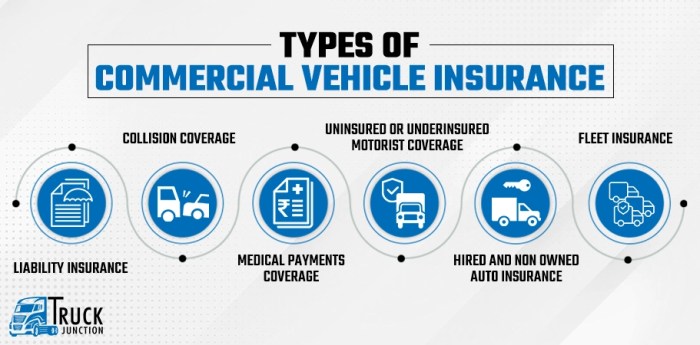Delve into the realm of Workflow Automation Trends in Global Business Operations, where cutting-edge technologies intersect with multinational companies to enhance operational efficiency. This introduction sets the stage for a captivating journey through the landscape of automation trends in the global business arena.
Overview of Workflow Automation Trends in Global Business Operations
Workflow automation has become an integral part of modern global business operations, revolutionizing the way companies manage their processes and tasks. By leveraging technology to streamline workflows, organizations can enhance efficiency, reduce errors, and improve overall productivity.
Current Landscape of Workflow Automation
In today's fast-paced business environment, companies across the globe are increasingly adopting workflow automation solutions to optimize their operations. From small startups to large multinational corporations, organizations are embracing automation technologies to digitize manual tasks and eliminate repetitive processes.
Key Drivers Influencing Adoption of Workflow Automation Technologies
- Rising demand for operational efficiency: Companies are under pressure to deliver products and services faster while maintaining high quality standards. Workflow automation helps streamline processes, reduce bottlenecks, and improve overall efficiency.
- Advancements in technology: The rapid development of artificial intelligence, machine learning, and robotic process automation has made workflow automation more accessible and cost-effective for businesses of all sizes.
- Globalization of business operations: With operations spanning multiple countries and time zones, multinational companies are turning to workflow automation to standardize processes, ensure compliance, and centralize control over their operations.
Benefits of Implementing Workflow Automation in Multinational Companies
- Enhanced productivity: By automating routine tasks, employees can focus on more strategic activities, leading to increased productivity and improved job satisfaction.
- Improved accuracy: Automation reduces the risk of human error, leading to higher accuracy in data processing and decision-making.
- Cost savings: Streamlining workflows and eliminating manual tasks can result in significant cost savings for multinational companies, especially in terms of time and resources.
Emerging Technologies Shaping Workflow Automation
Artificial intelligence (AI), robotic process automation (RPA), and the Internet of Things (IoT) are revolutionizing workflow automation in global business operations. These emerging technologies are driving significant changes in how businesses streamline their processes and increase efficiency.
Artificial Intelligence Revolutionizing Workflow Automation
Artificial intelligence plays a crucial role in automating repetitive tasks and decision-making processes. AI algorithms can analyze data, learn patterns, and make intelligent decisions without human intervention. This capability enables businesses to automate complex workflows, improve accuracy, and reduce manual errors significantly.
Robotic Process Automation Streamlining Global Business Operations
Robotic process automation (RPA) involves the use of software robots to automate rule-based tasks traditionally performed by humans. RPA technology allows organizations to automate routine activities, such as data entry, data processing, and report generation, leading to increased productivity and cost savings.
By integrating RPA into workflow automation, businesses can streamline their operations and enhance overall efficiency.
Impact of Internet of Things (IoT) on Workflow Automation Efficiency
The Internet of Things (IoT) refers to a network of interconnected devices that can communicate and share data with each other. In the context of workflow automation, IoT devices enable real-time monitoring, data collection, and analysis, facilitating more efficient and data-driven decision-making processes.
By leveraging IoT technology, businesses can automate tasks, optimize resource utilization, and enhance operational efficiency across various business functions.
Challenges and Solutions in Implementing Workflow Automation Globally
Implementing workflow automation globally can present various challenges for organizations. One common challenge is resistance to change from employees who may fear their roles will be replaced by automation. Additionally, cultural differences, varying regulatory requirements, and language barriers can complicate the deployment of automation solutions across different geographical locations.
Overcoming Resistance to Change
One effective strategy to overcome resistance to change is to involve employees in the automation implementation process from the beginning. Providing training and clear communication about how automation will enhance their roles rather than replace them can help alleviate fears.
Additionally, highlighting the benefits of automation, such as increased efficiency and reduced errors, can motivate employees to embrace the change.
Integrating Workflow Automation Tools Across Locations
When integrating workflow automation tools across different geographical locations, it is essential to have a standardized approach. This includes establishing common processes, workflows, and data formats to ensure seamless communication and collaboration. Leveraging cloud-based solutions can also facilitate accessibility and scalability across global teams.
Regular monitoring and feedback mechanisms can help identify any issues and ensure consistent implementation of automation tools worldwide.
Case Studies and Examples of Successful Workflow Automation in Multinational Corporations
Workflow automation has become an essential tool for enhancing operational efficiency in multinational corporations. Let's explore some real-world examples of companies that have successfully implemented workflow automation to streamline their global business operations.
Company A: Streamlining Supply Chain Management
Company A, a leading multinational retailer, implemented workflow automation in their supply chain management processes. By automating order processing, inventory management, and logistics coordination, they were able to significantly reduce lead times and improve overall operational efficiency. This resulted in a 20% decrease in operational costs and a 30% increase in on-time deliveries.
Company B: Enhancing Cross-Functional Collaboration
Company B, a global technology company, utilized workflow automation to improve collaboration and communication within their multinational teams. By implementing automated workflows for project management, document sharing, and task assignments, they were able to break down silos and facilitate seamless communication across different departments and regions.
As a result, project timelines were shortened by 15% and team productivity increased by 25%.
Company C: Optimizing Financial Processes
Company C, a multinational financial services firm, leveraged workflow automation to optimize their financial processes, including invoice processing, expense management, and compliance reporting. By automating repetitive tasks and implementing approval workflows, they were able to reduce processing times by 50% and decrease error rates by 40%.
This led to substantial cost savings and improved regulatory compliance across their global operations.
Closing Notes

In conclusion, the evolution of workflow automation trends in global business operations showcases a promising future filled with innovation and efficiency. By embracing these advancements, companies can unlock new levels of productivity and collaboration on a global scale.
General Inquiries
What are the key drivers influencing the adoption of workflow automation technologies?
The key drivers include operational efficiency, cost savings, increased productivity, and improved collaboration.
How is artificial intelligence revolutionizing workflow automation?
Artificial intelligence is enabling automation tools to analyze data, make decisions, and adapt to changing scenarios without human intervention.
What are common challenges faced when deploying workflow automation solutions?
Common challenges include resistance to change, integration issues across geographical locations, and ensuring data security.









